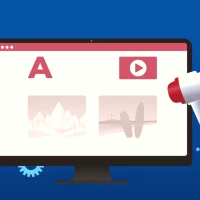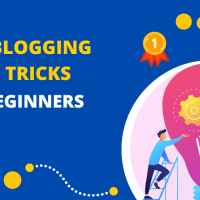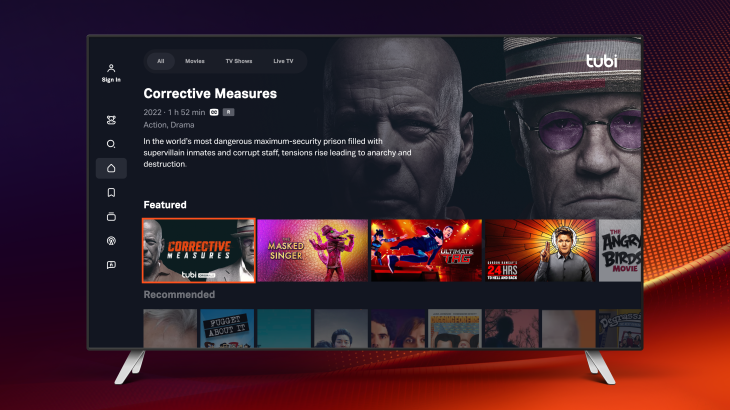Understanding Blog Revenue Models
In the vast landscape of online entrepreneurship, blogging surfaces as a ubiquitous venture. It not only unfolds avenues for creative expression but is also an effective catalyst for income generation. However, it is not a one-size-fits-all formula. Diverse streams of revenue models co-exist within the blogging stratosphere each with its unique utility.
The first model worth exploring is Affiliate Marketing, where bloggers link products or services in their blog posts. When readers click the link and make a purchase, the blogger gets a commission. The second model is sponsored content, where companies pay bloggers to write posts reviewing or promoting their product or service. Similarly, bloggers can earn through display advertisements that appear on their blogs. More direct models include selling products or services directly from the blog or offering consultancy services. Finally, income can also stem from granting paid access to premium content, or through donations and crowdfunding. Innovation, diversity and adaptability play an essential role in utilizing these models to monetize a blog.
The Role of Affiliate Marketing in Blogging
Engaging in affiliate marketing has become an incredibly popular strategy among bloggers hoping to monetize their platform. It refers to the process in which a blogger partners up with a company to promote its products or services and earns a commission on any sales or leads that come from their referrals. This advertising model is performance-based making it an attractive route in blog monetization because income may scale with the intensity of promotion and popularity of the blog.
Bloggers typically include affiliate links throughout their content, often in product reviews, tutorials, or comparison guides. When their readers make a purchase using these links, the blogger then earns a percentage of the sales revenue. Not only can this be lucrative for the blogger, but it also benefits businesses seeking to promote their products to a wider audience. By aligning with relevant companies and valuable products, affiliate marketing allows bloggers to create a symbiotic relationship with brands that are consistent with their blog’s theme and readers’ interests.
Profit Through Sponsored Posts and Reviews
For bloggers, monetizing their content is often a primary concern, and one effective way of doing so is via sponsored posts and reviews. This method allows brands to leverage a blogger’s audience in order to promote their products or services. In this scenario, bloggers create posts or produce reviews integrating the brand’s offerings, which in turn provides value to their readers while simultaneously driving attention and potentially sales towards the brand.
However, for this revenue model to be successful, authenticity and transparency are key. Bloggers must remember to only endorse products or services that they genuinely believe in, as the trust factor is what earns them their audience. The audience must also be informed that the content they are consuming is sponsored. Following these practices not only adheres to legal standards but also ensures that bloggers maintain the respect and trust of their readers, considering that a misled audience can lead to lost followers and jeopardized partnerships.
Unlocking Revenue Through Display Advertisements
Display advertisements represent one of the oldest and most common ways to earn revenue from a blog. They can appear as banners, sidebars, or popping windows on your blog, showcasing products or services from advertisers. The display advertising system operates on a pay-per-click (PPC) or cost-per-thousand (CPM) impressions model, providing bloggers with a steady earning potential.
Bloggers can leverage various platforms like Google AdSense, Media.net, and BuySellAds to integrate display advertisements into their blogs. These platforms serve as intermediaries between advertisers and bloggers, simplifying the process and allowing bloggers to focus on creating engaging content, while the revenue flows from the attention their audience gives these advertisements. With strategic placing and selection, display advertisements can prove to be a significant source of blog revenue.
Direct Selling: An Effective Strategy for Blog Earnings
Direct selling serves as a valuable revenue model for bloggers who have products or services to offer. These can be tangible goods like homemade crafts or digital offerings like software and apps that can be marketed to blog readers. A major benefit of this model is that it allows the blogger to have complete control over the product, including pricing, design, and marketing. If executed correctly, direct selling can fetch significant earnings, as the monetization doesn’t depend on any third-party service or algorithm.
However, direct selling also demands a substantial time commitment and an understanding of marketing principles. It’s essential for bloggers to create well-crafted product pages that intuitively guide visitors towards a purchase. Also, bloggers are wholly responsible for customer service and satisfaction, which includes addressing queries, resolving complaints, and potentially even handling returns and refunds. Enduring direct selling on your blog can be immensely profitable, but it requires a level of dedication and business acumen.
Subscriptions and Memberships: A Reliable Income Stream
As a blogger, incorporating subscription and membership models is a profitable way to generate consistent income. This revenue stream requires readers to pay a recurring fee in exchange for exclusive content, features or services. High-quality content that resonates with the target audience is crucial in this method. Without robust, engaging content, readers may not find value in the subscription or membership and choose not to continue.
For a successful membership model, it’s essential to provide exclusive perks. This might include early access to new content, discounted rates for products or services, or access to a private community forum. One need not offer all of these, instead, it’s effective to identify what appeals most to your specific audience and build your membership rewards around that. The key is to keep the audience feeling valued so they will remain loyal subscribers. The lure of stability in revenue makes the subscription and membership model an attractive strategy for bloggers.
Leveraging Consultancy and Coaching for Blog Profits
In the vast world of blogging, many seasoned bloggers have found a way to amplify their earnings through consultancy and coaching. This revenue stream capitalizes on the blogger’s expertise in a specific field, for example, cooking, interior design, or digital marketing. They offer personalized advice, coaching sessions, or consultancy services to their readers and followers. As a result, they not only monetize their knowledge but also strengthen their bond with their audience by direct interaction.
The key to success in consultation and coaching is the credibility of the blogger. Clients and readers are prepared to pay more for services rendered by individuals they regard as experts. Therefore, bloggers need to continuously enrich their knowledge base and stay abreast of industry trends. With this approach, they can maintain a steady flow of revenue while simultaneously providing valuable content in their area of expertise.
How to Generate Income Through Online Courses and Workshops
In the digital landscape, bloggers often seek to diversify their income streams, and one avenue that holds immense potential is offering online courses and workshops. These platforms are a way to share specialized knowledge with readers, while also monetizing the content. The idea is to identify a skill or expertise that the blogger possesses, which can provide value to readers in a structured learning format, creating a win-win situation.
The creation of courses and workshops, whether live interactions or pre-recorded sessions, involves a one-time investment of time and effort, but can be sold multiple times over, providing a lucrative revenue stream. To make the course more appealing, bloggers can include downloadable resources, quizzes, and certificates of completion. The key to making this model effective is to create a course content that aligns well with the blog’s theme and resonates with the readers’ interests and needs. The more relevant and beneficial the course is perceived, the higher the likelihood of readers enrolling and generating profits for the blogger.
Harnessing the Power of E-books and Merchandising
In the dynamic landscape of blog monetization, e-books have emerged as a potential goldmine. They offer an excellent platform for bloggers to share their knowledge while also producing a steady form of income. The sale of e-books provides a perfect opportunity for bloggers to add a layer of interactivity and value to their content. This not only strengthens the relationship with their audience but also sets up a direct channel of revenue.
Entering into the world of merchandising can be equally rewarding for bloggers. By creating and selling products related to their blog’s niche, they can build brand loyalty and earn profits simultaneously. This could range from T-shirts to mugs, stationery, artwork, and more. Especially for lifestyle, crafts, or hobby-based blogs, this can serve as an effective method to create a holistic brand presence while also adding a lucrative dimension to their earning potential.
Earning Potential of Donations and Crowdfunding for Blogs
In recent times, donations and crowdfunding have emerged as substantial revenue generators for bloggers. This model thrives on the goodwill of readers who appreciate the value being created and are ready to support the blogger financially. It bears similarity to the traditional patronage system, where creators are funded directly by those who find value in their work. Patreon, Ko-fi, and Buy Me a Coffee are popular platforms for receiving such donations. These platforms provide a medium for bloggers to receive funds in the form of one-time payments or regular subscription-based support.
Crowdfunding, on the other hand, works effectively for larger projects. Bloggers can appeal to their audience to finance an initiative, be it creating a book, starting a podcast series, producing a documentary, or developing premium content. Platforms like Kickstarter and Indiegogo are often used for crowdfunding efforts. Reward tiers are generally set up to incentivize contributors with early access, exclusive content, merchandise, or acknowledgement in the project. However, the success of both the donation and crowdfunding models hinges critically on the trust and rapport the blogger has built with their audience.



























